
I’m a little ambivalent about putting this take-home exam essay I wrote in second year up on the blog. On the one hand, it’s something I’ve thought about posting up for a while. On the other, I feel that even though I’ve learned more about Classics and grown as a person since second year, I still find this essay disturbing in many ways. It’s an answer to the question, “Why did Greek and Roman myths have so much rape in them?” A nasty subject at the best of times. But I’ve weighed up my options, and found two reasons why I feel this was worth posting.
Firstly, there’s a bit of bragging on my part. I’m pretty sure this is one of the highest marked essays I ever wrote in my first three years of undergraduate study. It was graded in the 90’s (whereas any mark over 80 would have put the essay in the top 10%). That didn’t necessarily happen because it was the best essay I wrote, but it was very well received by the university. Feminist essays are satisfying like that. I don’t think there’s any other ideology that the university would be happy to see you jump on your figurative high-horse and lambast your ideological opponents with. Looking back, I wonder if this essay is slightly overdone at times; but your reading of it may vary. Clearly my examiners very much enjoyed it.
The second reason I have for posting it here is that this essay very much resonates with the modern issue of Rape Culture. In the twenty-first century, we’re still consuming so many stories, films and TV series which shove images of violent, pushy, rapey sex in our faces, whenever directors want to make sex look more exciting or the protagonists more virile. I would say that these rapey depictions of sex are cheap thrills in movies, but they’re worse than that. The movies we watch tap into a deeper narrative which justifies a rape as understandable, that it’s the normal way for a man to react to seeing a woman – that woman – the one who takes your fancy, the one who’s dressed just slutty enough, the one who’s supposedly asking for it.
And there are parallels between the stories of now and then. Unlike in real life, the rape victims in both classical mythology and modern fictional representations are hardly ever ugly girls. That, indeed, is no coincidence. What’s picturesque about raping children or elderly women? The fantasies of pretty girls seem so very near the surface both in the retelling of ancient mythology and in modern media. And in both cases, they feed into the apologetic of rape.
Rape culture is a collective understanding about classifications of rapists: The “normal” rapist (whose crime is most likely to be dismissed with a “boys will be boys” sort of jocular apologia) is the man who forces himself on attractive women, women his age in fine health and form, whose crime is disturbingly understandable to his male defenders. The “real sickos” are the men who go after children, old ladies, the disabled, accident victims languishing in comas—the sort of people who can’t fight back, whose rape is difficult to imagine as titillating, unlike the rape of “pretty girls,” so easily cast in a fight-f*ck fantasy of squealing and squirming and eventual relenting to the “flattery” of being raped. – Melissa McEwan
It is for these reasons I felt it would be nice to have this essay up here, even though I know it’s on an unpalatable subject. I should add that not all ancient erotic literature is as rapey as … well, most of Ovid’s corpus. If you want to hear about something that actually celebrates mutual attraction, have a read of Song of Songs. After writing this essay, I felt awful inside, but that book, Song of Songs, really made for a refreshing change from the boundless rapishness of Latin erotic poetry.
In any case, I hope you’ll find the essay below worth the read.
Discuss the extent to which rape is central to heroic mythical narratives of the Greeks and Romans. What is the effect of associating gods and heroes with this type of violence?
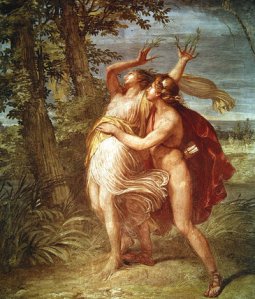
Rape is an essential element in several significant Greco-Roman mythic narratives, as it often brings about the creation of a new deity, hero or institution. However, rape can also appear in stories which do not strictly require it for the narrative sequence. This suggests that there is a reason for the rape’s inclusion, and a motive for associating both gods and mortals with this form of violence. This essay will explore how the mythic accounts of rape construct the identity of gods and men as victors, powerful and masculine. Furthermore, the essay will also examine the numerous and paradoxical allusions to an inherent vulnerability common to all mortal and divine rapists – the burning arrows of Cupid. This universal vulnerability not only propels the story’s rapist to commit sexual violence but also, in part, serves to pardon his crimes. By insisting that all gods and heroes are helpless to this undefeatable passion, the narrative effectively normalises and tolerates rape.
There are numerous ways in which rape can be productive for the mythic narrative. In practical terms, the sexual act often leads to pregnancy and birth, especially if a parent is divine, as in the case of Callisto, who was cursed by Juno for having borne a son of Jupiter.[1] Notably, Erichthonius and Romulus, the founders of Athens and Rome respectively, were also conceived under the circumstances of divine rape.[2] Moreover, several minor deities were born from rape, including Epaphus son of Io and Jupiter,[3] and the twin gods known as the “Lares”, children of Lara and Mercury.[4] However, the simple reproductive benefit of the copulation in rape myths does not explain why the sexual act is plainly described as forceful and non-consensual. It can hardly be argued that consensual sex does not produce offspring, so the motivation behind associating these gods and heroes with rape in particular must require further explanation.
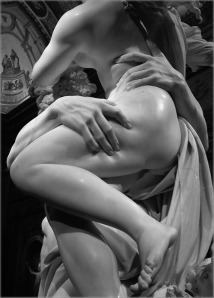
Rape may also be a catalyst for later events in the narrative sequence. Notoriously, the rape of Lucretia and its aftermath fomented a revolt which expelled Rome’s last kings, effectively marking the start of the Roman Republic.[5] Even more significantly, the rape and abduction of Proserpina[6] can be seen as crucial to the development of the natural world, as it led to the institution of the seasons.[7] For these myths, rape functions as a plot device which compels the families of rape victims to seek retribution or recompense, perhaps with varying success. [8]
However, there is at least one mythic work in which rape is present, but not central or crucial to the narrative sequence of events. After the young cross-dressing Achilles raped Deidamia in Statius’ Achilleid, he was still to be found hiding with the women of Scyros several months later.[9] It wasn’t until he armed himself with a shield and spear in front of Odysseus that he was finally discovered and sent to the war.[10] The girl had become pregnant and bore him a son, but he wasn’t anxious to remember them for very long after he left the island.[11] In order to comprehend why Statius might have included this diversion in his broader epic, it is essential to look beyond the rape’s limited usage as a plot vehicle: instead, the incident paints a striking portrait of how Achilles came to develop and confirm his male identity.
It is clearly stated that Achilles, tired of his womanly disguise, enacted the rape to prove his manhood (mas) with love (amor).[12] Similarly, when Jupiter disguised himself as Diana to rape Callisto, his forceful kisses were described as “not maidenly” (nec sic a virgine),[13] thereby revealing his true gender through coercive passion. These lines imply that there is something masculine, or at least not feminine, about the role enacted by the rapist. When this kind of violence is associated with gods or heroes whose gender is ambiguous or otherwise disguised, it indisputably reaffirms their male identity.
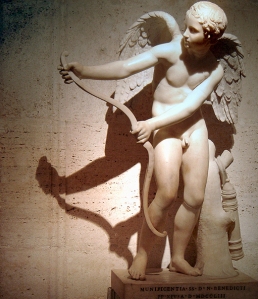
But paradoxically, the rapist himself often seems to be the first person to suffer. Prior to his attempted rape of Daphne, Apollo was painfully penetrated by Cupid’s arrow. The golden shaft pierced right through his bones and bone-marrow (per ossa medullas),[14] and Apollo called further attention to the wound in his heart as he reported it again in his pleas to Daphne.[15] Achilles also described himself as wounded in his breast[16] and Tereus apparently “suffered at the delay” (moras male fert) with flames in his chest (inclusas pectore flammas).[17] Pluto was also pierced deep in his heart,[18] and Jupiter felt a fire burn in his marrow.[19] In each of these numerous cases, the man is initially victimised and made to suffer the ravages of love. A possible effect of viewing the man or god as a victim may be to encourage the audience to sympathise with the rapist.
But by enacting the rape, the initial victim becomes the victimiser. As Amy Richlin observed, Tereus was grammatically active in his rape of Philomela, which puts him in the position of control.[20] The vocabulary used to describe the man or god in the act of rape can also be loaded with connotations of victory and power. Jupiter, when he overpowered Callisto, was literally named a “victor”.[21] As soon as Tereus had seized Philomela from her father, he exclaimed “I have won!” (“vicimus!”),[22] and the rape was stated in terms of how he “conquered with force” (vi superat).[23] After Apollo’s acquisition of Daphne, the laurel became a symbol of victory (although his actual rape attempt had failed).[24] These observations imply that the Greeks and Romans saw a connection between the desire to rape and the desire to win. By associating both desires with gods and heroes, the myths accentuate the virility and might of the rapist. Thus the victorious rapist is no longer the passive sufferer of empty ambition, but the aggressive taker of his objective.
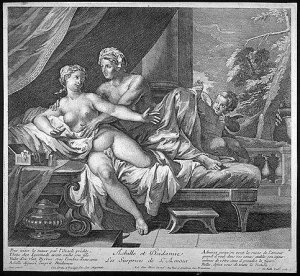
By contrast, courting in rape myths is seen as an un-manly waste of time. Achilles is shamefully described as a “prisoner of his beloved maiden” (dilectae virginis…captus)[25] for staying so long with Deidamia and not having raped her yet. The narrator of the Metamorphoses assures the reader that Apollo did not waste too much of his time in coaxing, as that would be out of character for the “youthful man” (iuvenis) he is likened to.[26] These myths do not appreciate restraint in the face of desire. On the contrary, to delay the rape is shameful, and it goes against the nature of a man.
The assertion that all mortals and gods are naturally susceptible to the whims of Cupid is deeply entrenched in Greek and Roman mythology. In Hesiod’s Theogony, Eros (Cupid) is one of the first gods to arise from Chaos at the beginning, second only to the Earth.[27] Hesiod states that this “limb-melter” has his divine power over “the mind and thoughtful counsel of all the gods and… human beings”.[28] Later, in Roman literature, Ovid affirms that Cupid with his “all-overpowering weapons”[29] can conquer even Jupiter himself.[30] This undermines the notion that a man should be responsible for his actions. If Cupid can render everyone helpless and irrational, then it becomes harder to condemn any mortal or god for acting on his passions.
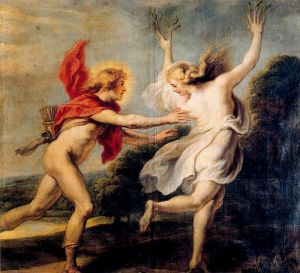
Ovid also attempts to excuse rape on account of it being an extension of “love”. When Ceres appealed to Jupiter over her daughter’s rape, the king of the gods argued that the act was not done “unjustly” (iniuria) because it was prompted by “love” (amor).[31] Similarly, Apollo tried to convince Daphne that he was not her foe because “love” (amor) was the reason for his pursuit.[32] To modern audiences, equating rape with love is unpalatable, but as Richlin noted, Ovid had once written that women secretly enjoy being raped: “force is pleasing to girls”.[33] When read in this context, Ovid’s “loving” rapists make light of the violence and harm they have inflicted. The forceful passions of the gods and heroes are deemed benevolent, whether the girl wants them or not.
The effect of framing the act of rape in this way, and associating it with all gods and all mortals, is that the narratives normalise and tolerate rape. It is worth noting that Statius compared his Achilles to a young, lustful bull, with his metaphorical herdsmen looking on with merry approval.[34] This agricultural allusion makes the young man’s antics seem altogether natural, even commendable. Indeed, Richlin argued that rape was not very clearly defined in Roman law (this is evidenced by the lack of a specific Latin term for rape),[35] and masters were fully entitled to sleep with their slaves at their own pleasure.[36] As such, rape might well have been a widespread experience for Roman freeborn men. If so, then the frequent and popular stories of gods and mortals committing rape would only serve to further ingrain the cultural dictum that coercive sex was – at least in some circumstances – acceptable.
In myth, rape often serves a key role in the narrative sequence because it can facilitate the creation of a new hero, divinity or institution. However, this explanation is not fully adequate or satisfactory. In order to understand why this kind of violence is associated with gods and mortals alike, it is crucial to consider how a myth about rape empowers the human or deity and affirms their virility. In addition, the way that rapes are treated in myth often serves to normalise the act, especially since the myths claim that absolutely all men and gods can be rendered helpless to the fiery arrows of desire. The net effect of associating the gods and heroes with rape in these stories is to make rape appear tolerable, perhaps even, distasteful though it seems to modern readers, admirable.
Bibliography
Primary Texts
Apollodoros, Library trans. J. Frazer (London, 1921).
Hesiod Theogony trans. G. W. Most, in Hesiod: Theogony, Works and Days, Testimonia (Cambridge, MA, 2006).
Livy The Early History of Rome trans. A. de Sélincourt (Harmondsworth, 1960).
Ovid Ars Amatoria (Latin text) ed. R. Ehwald, in Amores, Epistulae, Medicamina faciei femineae, Ars amatoria, Remedia amoris (Leipzig 1907).
Ovid Fasti (Latin text) ed. J. G. Frazer (London, 1933).
Ovid Metamorphoses (Latin text) ed. H. Magnus (Gotha, 1892).
Statius Achilleid (Latin text) ed. J. H. Mozley (London, 1928).
Secondary Sources
Richlin, A. ‘Reading Ovid’s Rapes’ in A. Richlin (ed.) Pornography and Representation in Greece and Rome (Oxford, 1992), 158-79
Midford, S., Lecture 10. Lectopia recording. (1:25:00) (accessed 5/6/2011)
[1] Ovid, Metamorphoses 2.471-3
[2] Apollodoros, Library III.xiv.6; Ovid, Fasti 3.12-49.
[3] id. M. 1.747-50.
[4] id. Fasti 2.616-7.
[5] Livy, I.58-60.
[6] Hesiod, Theogony 912; Ovid, M. 5.395.
[7] ibid. 5.564-71.
[8] Proserpina was allowed to spend a number of months of the year with her mother, but was also made to marry her rapist (Ovid, M. V.523-71). Philomela and Procne did succeed at forcing Tereus to eat his son (ibid. VI.647-660), but ultimately all three of them turned into birds and the sisters are eternally pursued by Tereus in bird-form (ibid. VI.667-674). In these cases the women did not gain complete recompense, in spite of their efforts.
[9] Statius, Achilleid I.672-5.
[10] ibid. I.852-875.
[11] ibid. II.44-49.
[12] ibid. I.640.
[13] Ovid, M. II.431.
[14] ibid. I.473.
[15] ibid. I.520.
[16] Statius, Achilleid I.638-9.
[17] Ovid, M. VI.466-7.
[18] ibid. V.384.
[19] ibid. II.410.
[20] Richlin (1992), 163.
[21] Ovid, M. II.437.
[22] ibid. VI.513.
[23] ibid. VI.525.
[24] ibid. I.556-60.
[25] Statius, Achilleid I.637-8.
[26] ibid. I.530-3.
[27] Hesiod, Theogony 116.
[28] ibid. 116.
[29] Ovid, M. V.366.
[30] ibid. V.369-70.
[31] ibid. V.525-526.
[32] ibid. I.504-7.
[33] id. Ars Amatoria I.673; Richlin (1992), 168.
[34] Statius, Achilleid I.315-8.
[35] Sarah Midford, Lecture 10, Lectopia recording (4:40)
[36] Richlin (1992), 161.
11 responses to “Rape Culture in Classical Mythology”
fascinating Carla, great analysis.
Thanks Meg!
[…] Rape Culture in Classical Mythology (foundinantiquity.com) […]
Great essay, though a very depressing topic. I have an unread copy of Ovid’s Metamorphoses that’s now reserved for the kindling box — the reality of it sends a chill through the core of my being, but the book itself will be helping to keep me warm this winter. — I still don’t get how anyone can gain any sense of pleasure while inflicting harm on another person, though. How close the definition of “manly” comes to the definition of “sadistic” is truly disturbing. Someone should really look into that…
Ah, I get what you mean about rape being an awful subject. But even with that, I think it would be a loss to totally discard Ovid’s Metamorphoses. It’s true that the Metamorphoses has rape scenes in it, and bad ones at that, and I don’t try to excuse them, but there are other things worth reading in the same work that would be lost if anyone threw it on the bonfire.
What surprises me most about Ovid’s character is that his wife loved him so much, showing great generosity and loyalty to him while he was in exile. I’m kind of inclined to think the rape scenes in the Metamorphoses are a kind of sick blockbuster entertainment like Fifty Shades of Grey rather than an indication that the author was as abusive to women as Tereus or other rapists in his stories (though that said, I haven’t read Fifty Shades of Grey, and Ovid’s advice in the Ars Amatoria that ‘force is pleasing to girls’ does show a fair amount of chauvinism on his part).
Yes, let us burn books. #Nazis #unenlightened
Fantastic essay, I came here after studying “Leda and the Swan” by Yeats. I found that the prominent rape of that poem was disturbing not only because of its content but that it alludes to the “divine knowledge” had of Zeus by Leda, was disturbing. I just don’t like the way that rape features around the core of the poem, you may agree if you’ve read it.
I really enjoyed your essay, because it hits the issue dead on, and it’s really well-written, it speaks to me.
this is very interesting, thank you for sharing your analysis!
I think that up to Renaissance there was the concept that if a woman became pregnant she must have enjoyed intercourse and consequently also rape: “In general, it was considered necessary that both the man and the woman be fully satisfied during intercourse for conception to occur (which was good for married women but bad for rape victims). ” Cf. http://www.gallowglass.org/jadwiga/herbs/WomenMed.html
Therefore there might me a medical aspect behind the mythological concept, which needs to be studied more. Thank you very much for this interesting essay, which I share in my fb group about the Baroque age (almost all paintings here are of Baroque origin), where restraint was promoted and the myth was seen as extremes to be rejected.
Rape will continue to the end of time no matter what essay or PC analysis you put out on the internet.
Such a well-written essay! You explained your topic while avoiding most, if not all, of the possible pitfalls of inflicting potential controversy discussing such a difficult topic, which even some NYT trained opinion panel writers fail at doing. You most certainly deserved your mark even it is logically appealing to a contemporary liberal audience. Good job!